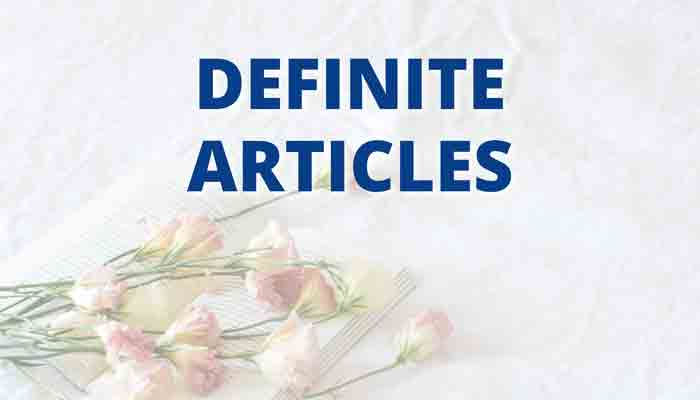This topic terrifies students. No one fully understands when it is necessary or not to put definite articles. Actually there are rules. It’s just that there are so many of them that an intuitive habit is formed faster, and the rules are not remembered. Although it will be useful to structure these rules!
Types of definite articles
We do not begin to study the topic of definite articles immediately, because the article itself without an object does not make any sense, it does not even have a translation. Therefore, first we get acquainted with nouns and find out that in Portuguese they have a gender – masculine or feminine; number is singular or plural. Knowing this, we can talk about definite articles, which, roughly speaking, have the same gender and the same number as the object to which they refer. However, the article has no gender and number at all, it just changes depending on the gender and number of the object, corresponds to it. So, let’s put the definite articles in the table.
| Definite Articles | |
| masculine/singular | o |
| masculine/plural | os |
| feminine/singular | a |
| feminine/plural | as |
In most cases, the definite article repeats the ending of the noun: o casaco (jacket), os cadernos (notebooks), a folha (leaf), as linhas (lines). However, there are nouns with the ending “-gem“: paragem (bus stop), margem (embankment); “-e“: árvore (wood), tapete (rug); “-idade“: oportunidade (opportunity), and many others. In this case, it is necessary to know the gender and number of the object in advance in order to use the definite article correctly. Good thing there are only four of them!
Names
When studying the topic of how to call your name, you probably noticed that we put the definite article in front of all names. There are exceptions, but we’ll talk about them another time.
Eu sou o Pedro. (I am Pedro.)
O Manuel mora em Peniche. (Manuel lives in Peniche.)
It is important to remember that when we use the verb “chamar-se”, the article is not needed before the name: Chamo-me _ Pedro. (My name is Pedro.)
Personal
The definite article is also used before nouns that refer to parts of the body, items of clothing, or personal qualities.
O lápis está na mão. (Pencil in hand.)
A dignidade é importante. (Dignity is important.)
What can be attributed to the personal parameters of a person is relative. Basically, we are talking about specific family members of a particular person, so we put the definite article before these words.
Os avós estão com os netos. (Grandmother and grandfather with grandchildren.)
Measures of time
What measures of time do we know? Seconds, minutes, hours, days, seasons and significant moments of time for us are holidays. Before all of them we put the definite article.
No domingo estamos com os pais. (On Sunday, we are with parents.)
No inverno ele estuda na escola. (He goes to school in winter.)
Eu gosto do Natal e da Pascoa. (I like Christmas and Easter.)
Temos o almoço às 13.00 (We have lunch at 13.00)
Measures of weight and length
In general, we can use the preposition “por” to indicate the price per meter or kilogram, but at this stage of learning the Portuguese language, we have not met it yet. So let’s use the definite article.
O feijão custa duzentos escudos o quilo. (Beans cost two hundred escudos per kilo.)
Esta fazenda custa dois mil escudos o metro. (This villa costs two hundred thousand escudos per meter.)
For a change in the examples, we indicated the monetary unit that was in Portugal before the euro.
Geographic features
We need the definite article to name the city, although here it is rather an exception. Not all cities have an article, and those that do have to be remembered. For example:
Tu estás no Porto. (You are in Porto.)
As for countries, there are countries that necessarily require the definite article, for example:
Eu sou do Brasil, de São Paulo. (I’m from Brazil, São Paulo.)
Esta bandeira é da Rússia e aquela é da China. (This is the flag of Russia, and that is the flag of China.)
The names of many countries (mostly European) can be used with or without the definite article: a/-
Espanha, a/- França, a/-Inglaterra, a/- Itália. Some countries do not need an article, but we will consider them in a separate topic.
This chapter of the article can also include continents, regions and districts. They also require the definite article: a África, a Europa, a America, o Mediterrâneo, a Beira Litoral, o Bairro Alto, and so on.
Eu moro no Bairro Alto. É um bairro antigo de Lisboa. (I live in Bairro Alto. This is an ancient area of Lisbon.)
In addition, geographical objects include natural: islands, mountains, volcanoes, lakes, oceans and deserts.
Nos somos dos Açores. (We are from the Azores.)
Elas são cientistas e trabalham no Saara. (They are scientists and work in the Sahara.)
We will refer parts of the world to this section: o Sul, o Norte, o Oeste, o Leste:
O Porto é no Norte de Portugal e ela é do Sul – de Portimão. (Porto is in the north of Portugal, and she is from the south – from Portimão.)
Conclusion
At this stage of learning Portuguese, these general rules are enough for us. In the future, you just need to pay attention to the articles already in the new and specific grammatical rule, because it is impossible to combine everything in one chapter. We will be able to consider some of the rules in the middle and at the end of the training, and we need some of the rules now. That’s why this article has everything you need to know about definite articles at the most basic level.
